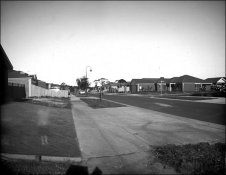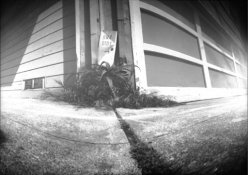joeyk49
Member
Okay. Start laughing now...because in a few lines, you'll wonder why you didn't start right from the begining...
I am actually looking for advise/recommendations from those that might have tried this...
As a project for a group of Cub Scouts (HEY!, Don't jump threads just yet! I'm serious!) in which I want to see if I can spark interest in photography in them AND get them to create something with their own hands, I've decided to have them construct their own pin hole cameras. I'm planning to have them do this over a period of several 1 1/2 hour meetings.
I found a site that very simply describes how to construct one out of a Quaker Oats container and using b/w photo paper as film. Exposing a 5x7 inch piece of photo paper makes it Large Format photography, right. (Are you laughing yet?) We will be loading and developing the negatives in my, as yet unbuilt, darkroom. We will also be reversing the negative and creating a contact positive.
Does anyone have experience with this and do you have any suggestions for me? The group of four boys are of average intelligence and attention span (Okay, NOW your laughing...).
I am actually looking for advise/recommendations from those that might have tried this...
As a project for a group of Cub Scouts (HEY!, Don't jump threads just yet! I'm serious!) in which I want to see if I can spark interest in photography in them AND get them to create something with their own hands, I've decided to have them construct their own pin hole cameras. I'm planning to have them do this over a period of several 1 1/2 hour meetings.
I found a site that very simply describes how to construct one out of a Quaker Oats container and using b/w photo paper as film. Exposing a 5x7 inch piece of photo paper makes it Large Format photography, right. (Are you laughing yet?) We will be loading and developing the negatives in my, as yet unbuilt, darkroom. We will also be reversing the negative and creating a contact positive.
Does anyone have experience with this and do you have any suggestions for me? The group of four boys are of average intelligence and attention span (Okay, NOW your laughing...).













